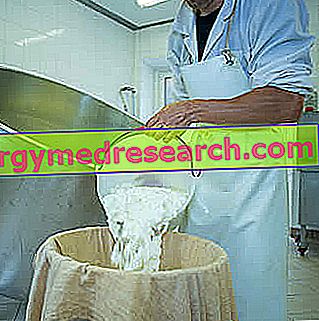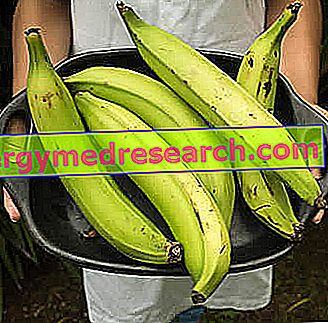
Information on Tribulus Terrestris Multipower
Tribulus Terrestris Multipower
Food supplement based on Tribulus Terrestris
FORMAT
Pack of 120 capsules
COMPOSITION
Tribulus extract
Tribulus terrestris fruits 65% of which Saponins 83%
Capsule: edible gelatin
Dyes: titanium dioxide and quinoline yellow.
Anti-caking agents: magnesium stearate and silicon dioxide.
Per capsule: Tribulus terrestris 650mg
Per 100 gr of product: Energy: Kcal 57 - Proteins: 13 gr - Carbohydrates: 0 gr - Fat 0.7 gr - Tribulus Terrestris 83 gr.
Product features Tribulus Terrestris Multipower
Tribulus Terrestris - this plant, belonging to the Zygophyllaceae family and of Asian origin, has spread as a pest also in North America. Known since ancient times for its tonic and energetic properties, in the last 20 years it has also made a name for itself in the sports world. Its diffusion is due to the molecular characterization of some elements, such as protodioscin,

The scientific literature has produced the first results on cell cultures and animal models, recording a cytotoxic effect on tumor cells in vitro, a cardioprotective effect, an anti-cholesterol-lowering hypoglycemic effect.
One of the most important factors that greatly limits the use of tribulus terrestris for therapeutic purposes is the difficulty in reproducing plants in the same way as active components, due to the different modes of growth and the unpredictable action of environmental characteristics. This is why scientific research increasingly pushes to identify, isolate and characterize the active ingredient, in order to reproduce it in vitro and standardize the chemical-physical properties of the various products placed on the market.
Rationale - Tribulus Terrestris Multipower
Tribulus is wrongly used in sports, with the aim of increasing endogenous levels of testosterone and derivatives. In reality this hypothesis is based on some scientific basis, which showed a significant increase in the levels of LH, testosterone and DHEA following supplementation with tribulus terrestris. The limit of these studies is the sample, since the reported results have been obtained on animal guinea pigs, for which the plant appears to be very effective. Unfortunately the same doesn't seem valid for the man, given the presence of various studies that show:
- Absence of hormonal effects: no increase in testosterone and derivatives, let alone gonadotropins;
- Absence of anabolic effects: no increase in lean mass, let alone loss of fat mass;
- Absence of ergogenic effects: no improvement in physical performance, neither in terms of strength nor in terms of resistance.
It therefore appears quite evident that scientific foundations obtained on organisms other than man are not always traceable to man.
Product features - Tribulus Terrestris Multipower
The product in question has another limit, related to the characterization of the protodioscine content. This saponin, in fact, appears to be the active ingredient able to increase testosterone secretion in animals, and improve spermatogenesis and reproductive capacity. However, the titration of the product refers to the entire pull of saponins, and scientific research has shown that in addition to protodioscin, there are others with an unknown function. Consequently it is not possible to understand how much active ingredient is present in a capsule; we therefore point out the absence of a very important parameter for the evaluation of product quality.
Recommended use by the company - Tribulus Terrestris Multipower
We recommend taking 2-3 capsules a day.
Use in sports - Tribulus Terrestris Multipower
The various studies propose very different dosages, from 450 mg total per day to 20 mg / kg / day, recording however a single result: absence of anabolic effects and induction of testosterone secretion.
In light of the above, and given the absence of data on toxicity or the maximum tolerated dose, and the absence of clear studies on the pharmacokinetics of this plant or its active principle, it is quite difficult to provide a dosage or a protocol effective supplementary.
Side effects Tribulus Terrestris Multipower
Fortunately, the side effects also seem to be insignificant, although there have been cases of abdominal pain. To be documented is a study that reported the presence of gynecomastia following the chronic use of tribulus terrestris.
Interactions Tribulus Terrestris Multipower
Although the pharmacokinetics of this product is not characterized, it is known that saponins can interfere with the absorption of different substances, significantly changing their bioavailability.
Among the typical effects of saponins in general we can remember the expectorant, mediated by an irritant action on the mucosa, cholesterol-lowering, anti-edema and anti-inflammatory.
Precautions for using Tribulus Terrestris Multipower
The product is contraindicated in cases of renal or hepatic disease, cardiovascular disease and / or hypertension, during pregnancy, during lactation and under 14 years.
This article, elaborated on the critical re-reading of scientific articles, university texts and common practice, is for informational purposes only and is therefore not a medical prescription. It is therefore always necessary to consult your doctor, nutritionist or pharmacist before starting to use any kind of supplement . Further information on the critical analysis of Tribulus Terrestris Multipower.
| BIBLIOGRAPHY |
The effect of five weeks on elite strength and muscle composition during preseason training in elite rugby league players. Rogerson S, Riches CJ, Jennings C, Weatherby RP, Meir RA, Marshall-Gradisnik SM. J Strength Cond Res. 2007 May; 2: 134-9. Chinese. Short term impact of Tribulus terrestrial intake on doping control analysis of endogenous steroids. Saudan C, Baume N, Emery C, Strahm E, Saugy M. J Ethnopharmacol. 2003 Apr; 85 (2-3): 257-60. Tribulus terrestris: preliminary study of its diuretic and contractile effects and comparison with Zea mays.Al-Ali M, Wahbi S, Twaij H, Al-Badr A. Boll Chim Farm. 1998 Dec; 137 (11): 473-5. Effect of Tribulus terrestris L. saponin mixture on some smooth muscle preparations: a preliminary study.Arcasoy HB, Erenmemisoglu A, Tekol Y, Kurucu S, Kartal M. The hormonal effects of Tribulus and its role in the management of male erectile dysfunction - an evaluation using primates, rabbit and rat.Gauthaman K, Ganesan AP. Int Braz J Urol. 2007 Jul-Aug; 33 (4): 554-8; discussion 558-9. El-Tantawy WH, Temraz A, El-Gindi OD. Ann NY Acad Sci. 2006 Nov; 1084: 391-401. The protective effect of Tribulus terrestris in diabetes.Amin A, Lotfy M, Shafiullah M, Adeghate E. Breast. 2004 Oct; 13 (5): 428-30. Gynaecomastia and the plant product "Tribulis terrestris".Jameel JK, Kneeshaw PJ, Rao VS, Drew PJ. Zhong Yao Cai. 2003 May; 26 (5): 341-4. [Effect of saponin from Tribulus terrestris on hyperlipidemia]Chu S, Qu W, Pang X, Sun B, Huang X. [Hypoglycemic effect of saponin from Tribulus terrestris] Li M, Qu W, Wang Y, Wan H, Tian C. Zhong Yao Cai. 2002 Jun; 25 (6): 420-2. Chinese. Brown GA, Vukovich MD, Reifenrath TA, Uhl NL, Parsons KA, Sharp RL, King DS. Ann Acad Med Singapore. 2000 Jan; 29 (1): 22-6. Proerectile pharmacological effects of Tribulus terrestris extract on the rabbit corpus cavernosum.Adaikan PG, Gauthaman K, Prasad RN, Ng SC. Ann Acad Med Si sett.ngapore. 2000 Jan; 29 (1): 22-6. |



